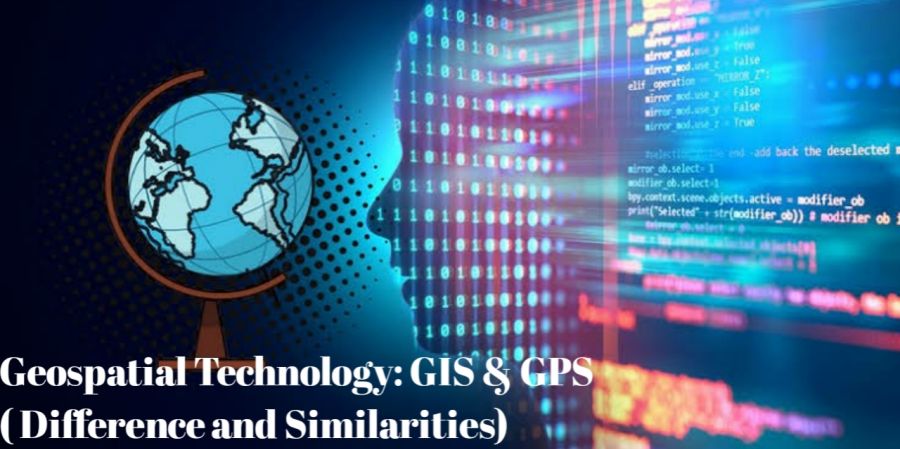

GIS Vs GPS: Differences and Similarities
Preface:
Geospatial technology deals with the science of geographic information technology that emphasized Geographic Information Systems(GIS), Remote Sensing(RS), Global Positioning Systems(GPS) including mapping and surveying methodology used on Photogrammetry and Cartography.
Geospatial technology focussed on the studies integration and acquisition of geo-referenced data and analysis while applications regarding geospatial technology are recognized as an effective tool used for the global decision-making processes to regulate planning and development. The fundamental objective of Geospatial technology is to provide new and updated data and information systems using and occupying the highest geo-referenced data with the lowest cost through the help of the RS, GIS, and GPS.
Let us know what we recalled from this article the differences and similarities of GIS and GPS.
A GIS is a self-regulating Geo-Information based system that digitally depicts the georeference data of a particular geographical area. The system is widely utilized to make dynamic maps by managing and displaying and analyzing geo-referenced data. GIS is an essential geospatial tool to collect attribute data ( from where the data is assumed; what the data contained; similarly, check them out the level of the data.
These attribute data are called nonspatial data. While dealing with the spatial data which can be used to determine the shape and size and location of geographical features. GIS data analysis is constituted of two types: Vector Databases and Roster Databases. In the Vector database, a geographer has to determine the geospatial data in terms of representing a point line.
In this case, he has to obtain the accurate data of a region dealing with its demographic attributes, topographic features in a linear pattern. While on the other hand, Raster Data can be analyzed by a cartographer with the help of a coding sequence to get such data and organized in the form of grids cells, and each of these grid cells contains the sequence of signal values furthermore the data of the grid cells are sequenced by one row after another row of a single column.
Nonetheless, GPS is the abbreviation of Global Positioning System which is regulated by the network of artificial satellites that determines the location of a geographical area with the coded transmission and information. GPS coordinates determine the exact and accurate information of latitudes and longitude of a geographic location.
The primary objective of the GPS is to estimate the direction of each satellite in terms of using radio magnetic waves obtained from multiple networks of satellites. GPS consisted of different types such as Differential Global Positioning System, Recreational Grade, Mapping Grade, and Survey Grade. White those positioning systems use a network of fixed ground-based reference locations to broadcast the different positions of the multiple satellites whereas recreational GPS are used to detect the location of a place through the use of applications. ( Hiking and Geocaching); Mapping Grade are mostly used by Military and Government agencies and Survey Grades helps the surveyor to find out the correct accuracy of a station by measuring the vertical and horizontal axis of the stations.
GPS nevertheless is often the easiest geospatial technology commonly used in the distinct field of surveying and mapping; it helps to measure the height and position of geographic areas; similarly helps in vehicle tracking and navigation of a place with perfect timings. For example, A GPS receiver detects the exact location of a place with a precise interval of time although some areas of GPS applications are Geotagging, Geo-tracking, Security, and Defense, Military Agencies.




